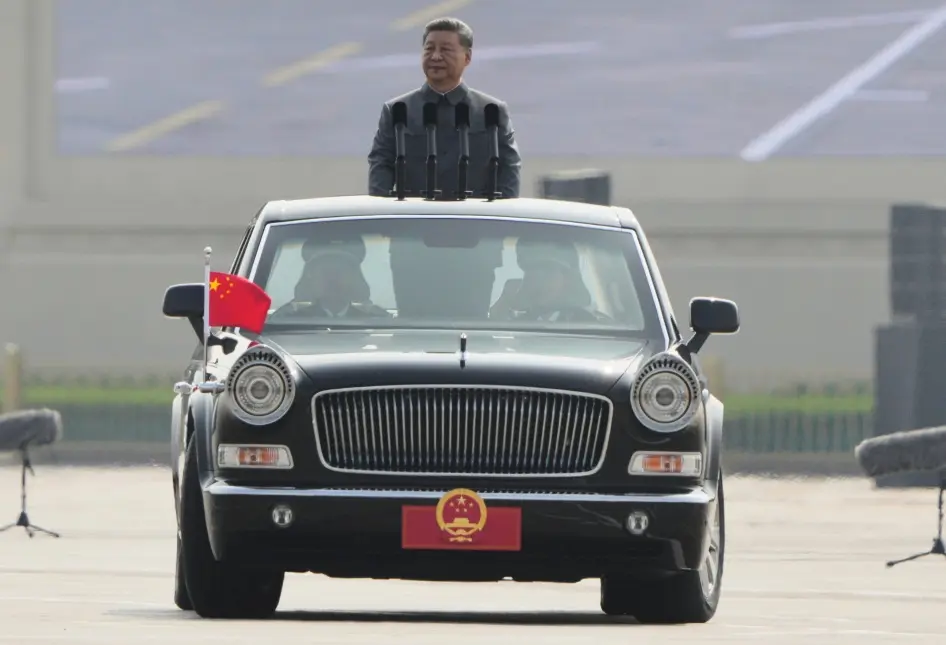China Ballooning To Near Space Competition
The Chinese surveillance balloon that the United States blew up earlier this year may have kicked off, at least from China’s point of view, a new superpower competition in ‘near space’.
That’s a part of airspace 60,000 to 330,000 feet from the ground, just before the beginning of outer space — and historically overlooked by militaries, until recently.
Satellite data company BlackSky has information using which researchers claim to have located a massive hangar in a remote area of Xinjiang, China which looked like the infrastructure needed to deploy some kind of lighter-than-air vehicle.
This collection of buildings and roads has been carefully watched for more than a decade. The complex, operated by the People’s Liberation Army
(PLA), is thought by intelligence analysts to house research and development centers for laser weapons capable of attacking US satellites, as well as test facilities for ballistic missiles, electromagnetic pulse research—and balloons.
Quartz quoted analysts at a private defense intelligence firm, Janes, as saying that they have been able to image “for the first time a 32-meter aerostat at that complex”. Aerostat means a lighter-than-air vehicle. “For the first time we can say, yes, this is balloon-related.”
The vehicle is about 100 feet (32 meters) long. The enormous hangar next to it is more than 850 feet (260 meters) long and 500 feet (140 meters) wide.
The question Quartz asked in its article is not echoing throughout the West: So what is the PLA up to with this airship?
There is a suspicion that China is developing anti-satellite lasers there. Researchers suspect the team at this facility is developing a vehicle-mounted laser that could briefly dazzle or permanently blind sensors used by satellites flying overhead; Russia possesses a similar system. Any remote-sensing satellite that gathers imagery of the Earth could be degraded by such a weapon, but the US military is most concerned about satellites that could give early warnings of missile launches against the US or its allies.
Analysts think it is likely the lasers inside the buildings could be used to precisely measure the location of satellites overhead, improving China’s orbital awareness. They claim to have data stretching back to 2015 that detected activity at the site, as measured by the opening and closing of those roofs, has intensified since 2020.
The challenge for intelligence agencies and independent analysts trying to understand China’s military from space is the limited set of clues. Is there a large dirgible waiting inside that large hangar? A new runway has been developed to the south of the site—is it for landing drones, or testing anti-drone laser systems? What about a tall tower near equipment associated with electromagnetic pulse research—is it for calibrating radar signals, or something else?
Billions of dollars have been invested in companies that are using novel sensors and satellite architectures to gather that data, while the US government has launched programs to develop and hire their capabilities.
These questions have made Western researchers to go back in time to find answers. They zeroed in on what a Chinese scientist, Xiang Libin, said in 2018. He was then a vice-president of the Chinese Academy of Sciencies who declared: “Strengthening the exploration and understanding of near space, seizing the strategic commanding heights of near space and cultivating emerging high-tech industries have become the focus of competition among countries around the world.” Xiang, an engineer who specializes in microsatellites and space technology, also served as chief commander of the Beidou satellite system, China’s competitor to the US-run GPS.
In terms of its military and scientific outreach in space, China is said to be developing its first near-space science experiment system. That is where the balloons come in. That is where the major facility in Xinjiang makes sense.
The experimental program’s existence reflects the renewed importance Chinese military officials attach to airships. These airships, officials and researchers say, are not just tools for surveillance or gathering weather and meteorological data, but they also provide help with advanced weapons China is building, including hypersonic missiles, and are a new and important area of competition with the US.
The Chinese balloon the Americans downed this February is said to be part of a fleet of surveillance airships Beijing has been building and deployed over 40 countries around the world. Suspected Chinese balloons have been spotted in Japan, Taiwan, India, Latin America and Hawaii in the past few years.
The sightings could reflect years of Chinese state and private investments into balloon capacity, making use of a centuries-old technology that could drift at low enough speeds that radar systems might not immediately tag them as foreign objects.
China’s efforts to develop aerial surveillance capacities were partly prompted by competition with advancements in near-space technology in other countries, including from the US.
A State-run Chinese paper, affiliated with the Chinese military, Liberation Armyh Daily, had some time ago even published a slogan: “Near space has become a new battleground in modern warfare.”
The balloons float along a band of the atmosphere up to 164,000 feet high, just before outer space begins — the peripheral area called near space. That altitude, straddling outer space and commercial airspace, makes the balloons useful for fine-tuning and targeting hypersonic weapons, which China is developing.
These balloons have the ability to quickly read the data from a launched ballistic missile and cruising at close to the ‘near space’. Their hypersonic application has turned slow-moving balloons, previously considered a low-tech option, into a surveillance and navigational tool seen as increasingly crucial by Chinese military officials. A Chinese media report said that “near-space vehicles have increasingly become the new darling of long-range and rapid strike weapons, and the pace of future wars will therefore be significantly accelerated”.











